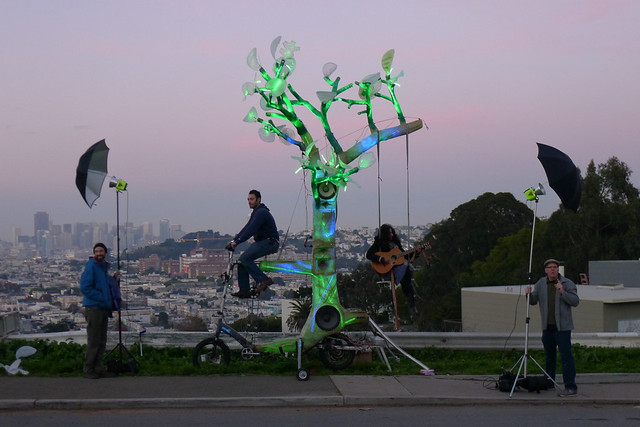
Demolding wave guides. Each of the slots is at a slightly different angle, allowing the 6 tweeters to reach different parts of the crowd. Photo: Mike Cobb.
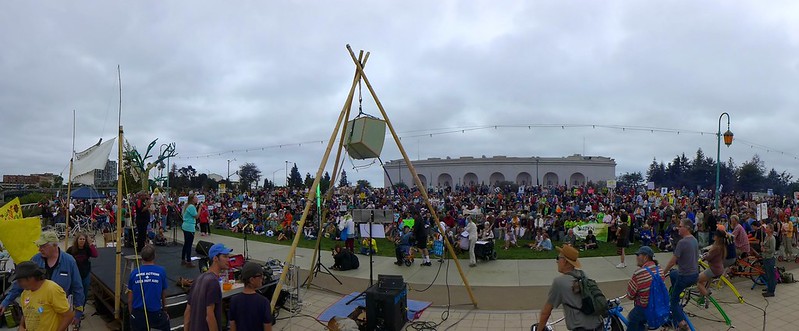
1/9/15 Update! The Russian Dolls / BRX system is in use! Check out the photos and blog post about the 9/21/14 People’s Climate Rally in Oakland.
———————-
It’s always exciting when you move from the brainstorming and drawing phases of a custom project into the hands-on, smelly, goopy, dusty build phase. That’s happening right now for a project that could hopefully have a big impact on how we do our largest Pedal Powered concerts. It doesn’t have a concise name at the moment, so I’ll call it the 3000-person Pedal Powered Concert System that Fits into a Briefcase. Another name I’m considering is “America’s Concert” in honor of the AC72 America’s Cup boats that partially inspired it. It’s also inspired by Fukishima & Global Warming, Bike Party, James Bond, and Rube Goldberg.
It’s a new way to reduce the volume and weight of our 12-speaker concert PA system, using ultralight materials and a stacking / nesting / Russian Dolls redesign of the loudspeaker cabinets.
Loudspeakers contain lots of air. Air is what allows them to reproduce low frequencies like bass notes and the beat of dance music. But it means that they take up lots of space.
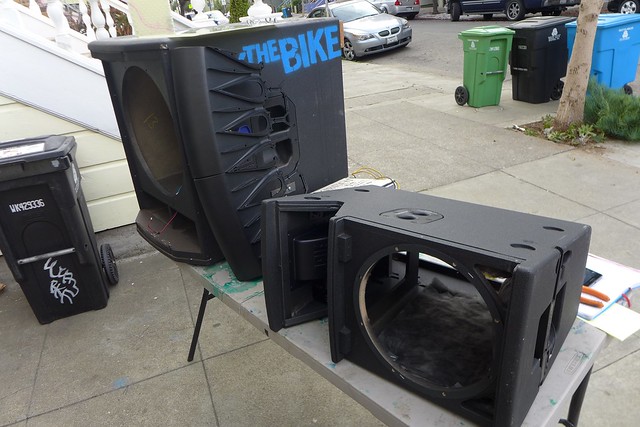

When an event is scheduled to take place in another city, the problem of moving air gets more pronounced, because we have to ship our gear using the trucking system. This 1000-pound pallet was shipped to Chicago in order to do an 8-bike system last spring. The cost was about $800 each direction. What’s worst is that the money goes to support the trucking and fossil fuel empires, which we are ultimately trying to challenge with our work on bicycle transport and human power.
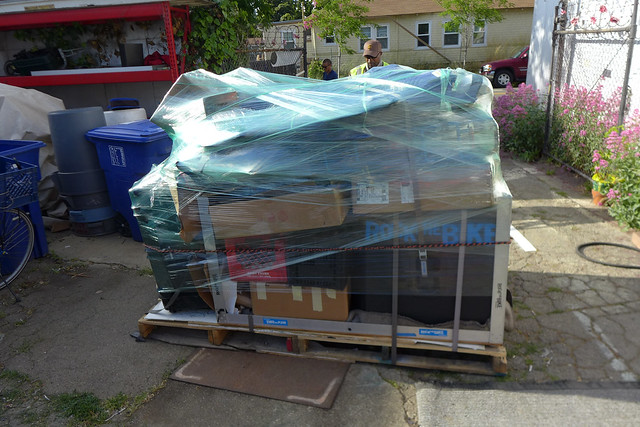
Here are our first steps:
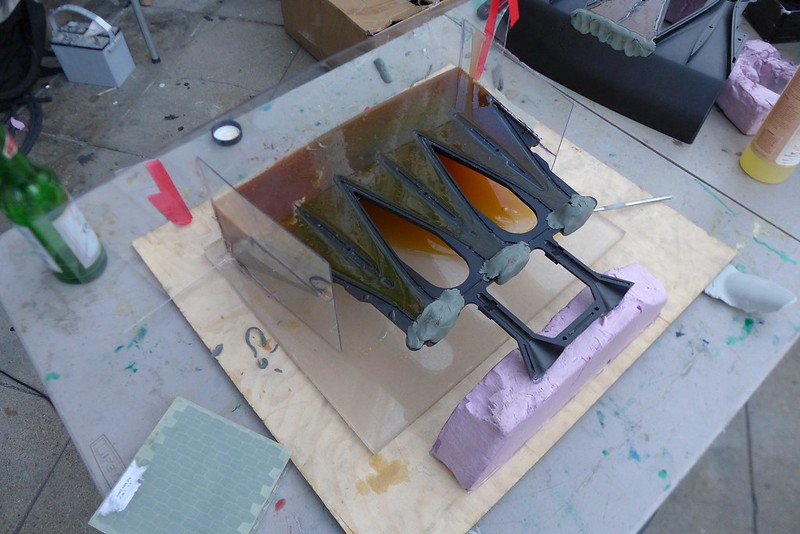
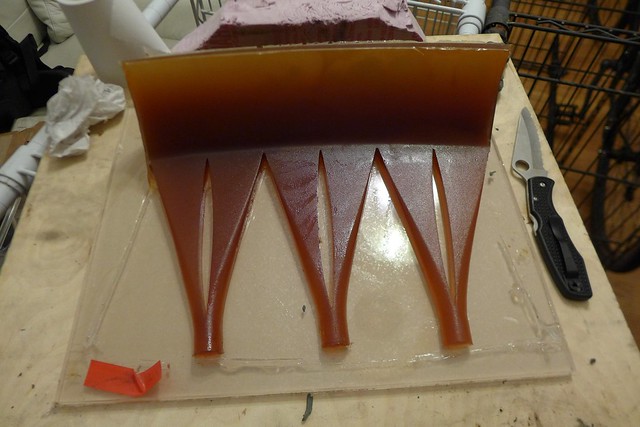
Here’s the demolded ‘plug’ of the JBL wave guide, that allow us to make fiberglass reproductions of the original waveguide in the material of our choice: fiberglass. Fiberglass is relatively light, plenty strong, and capable of beautiful lighting effects.
Here are a couple pictures of the fiberglass wave guides in progress.
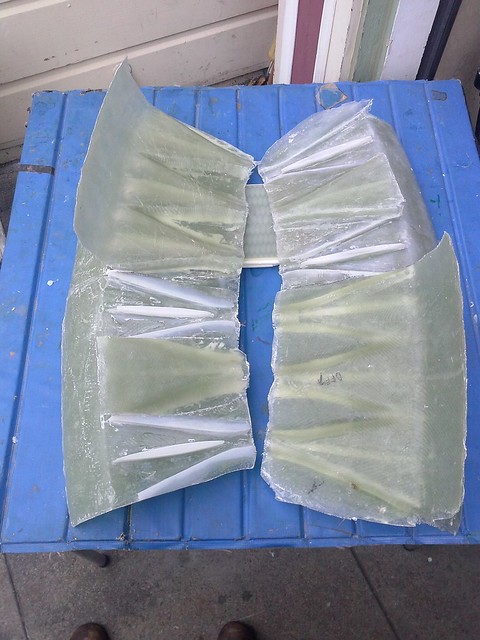
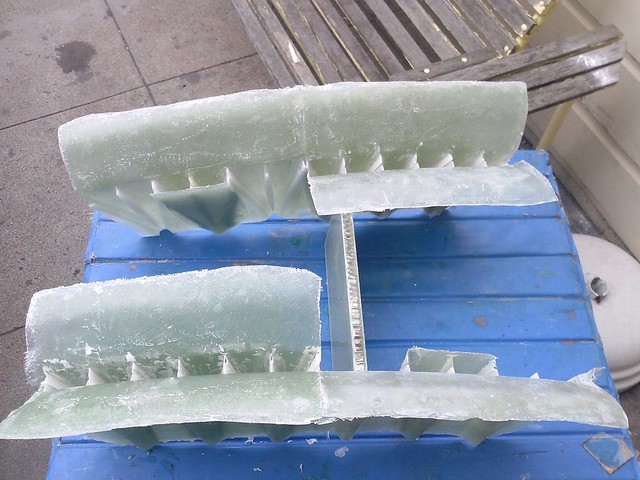

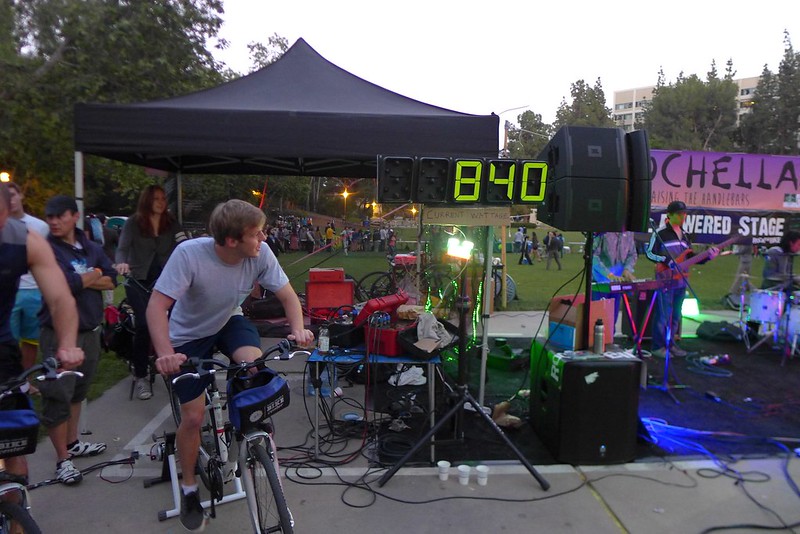
Fiberglass is lighter and stronger than the ABS plastic and plywood used by most speakers. It’s also translucent, allowing beautiful lighting effects for night time events:
Spreading the bike-powered concert is a big mission for Rock The Bike. After 8 years of R&D that began in our humble shop with a beautiful intention of capturing People Power, and lots of great events, mostly here in the San Francisco Bay Area, we want to share this work at a bigger scale. We find ourselves head to head with a Goliath of a concert industry. Concerts have become a huge expression of power. Production companies with box trucks haul in tons of gear, erect trusswork towers and backdrops to create a sensation of star worship, and then turn up the volume. The sound and lighting and transportation require lots of fuel. All of this fuel is ratcheting up the power consumption of our celebrations. But deep down we know it’s not necessary. Check out this awesome run-down of a 3000-person Beatles concert from 1964, which had a sound system much smaller than what we use for the same size audience, but which was a smashing success in terms of audience response.
In other words, it’s time to stop using raw Wattage to try to create what the Beatles had with their talent and charm. It’s obvious that the number or ratings of the loudspeakers isn’t a predictor of the effect a concert can have. If we want concerts to have an effect of creating togetherness, inspiration, beauty, Wattage isn’t the way to do it. Content is.
Our fullest bike powered system can be hauled by bike, set up without forklifts, and weighs about 1000 pounds. It has successfully been used in spaces that can hold 3000 people. With the current re-build, we’ll be able to share it in other places with less transport cost.


